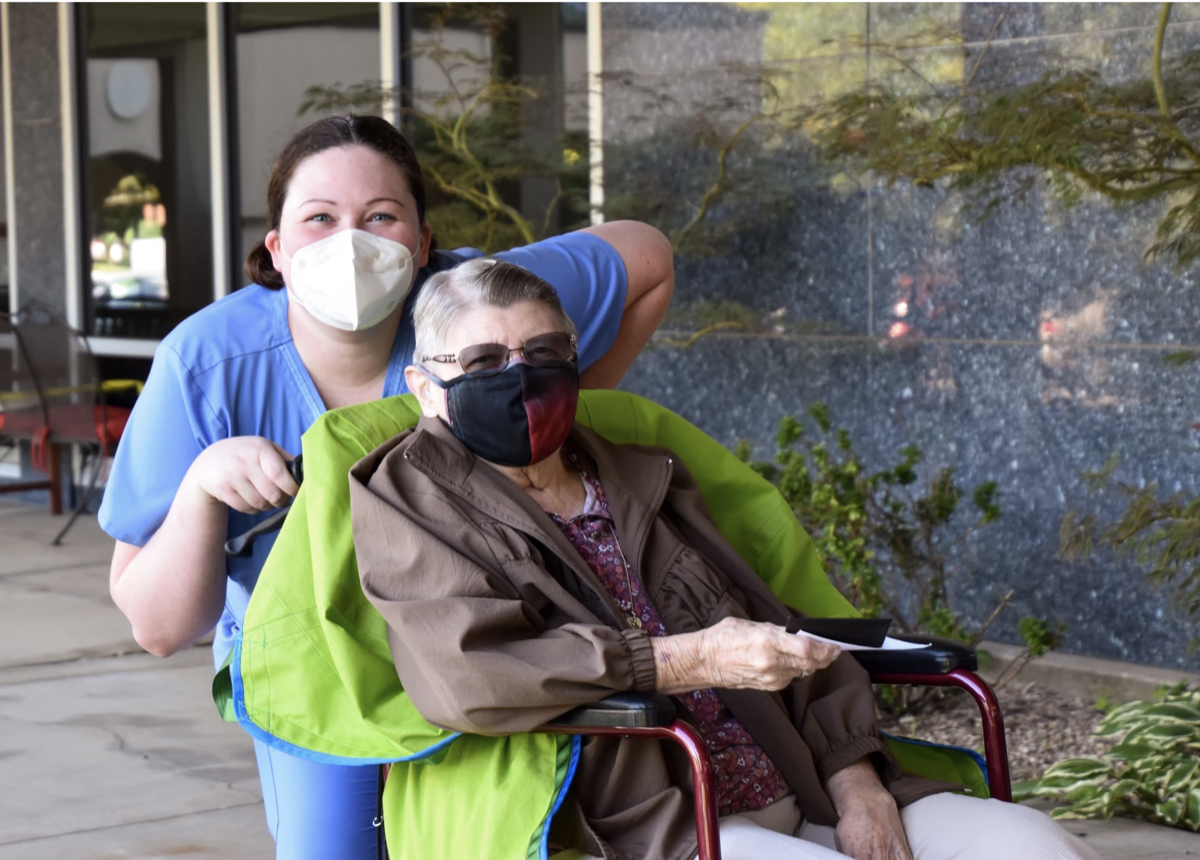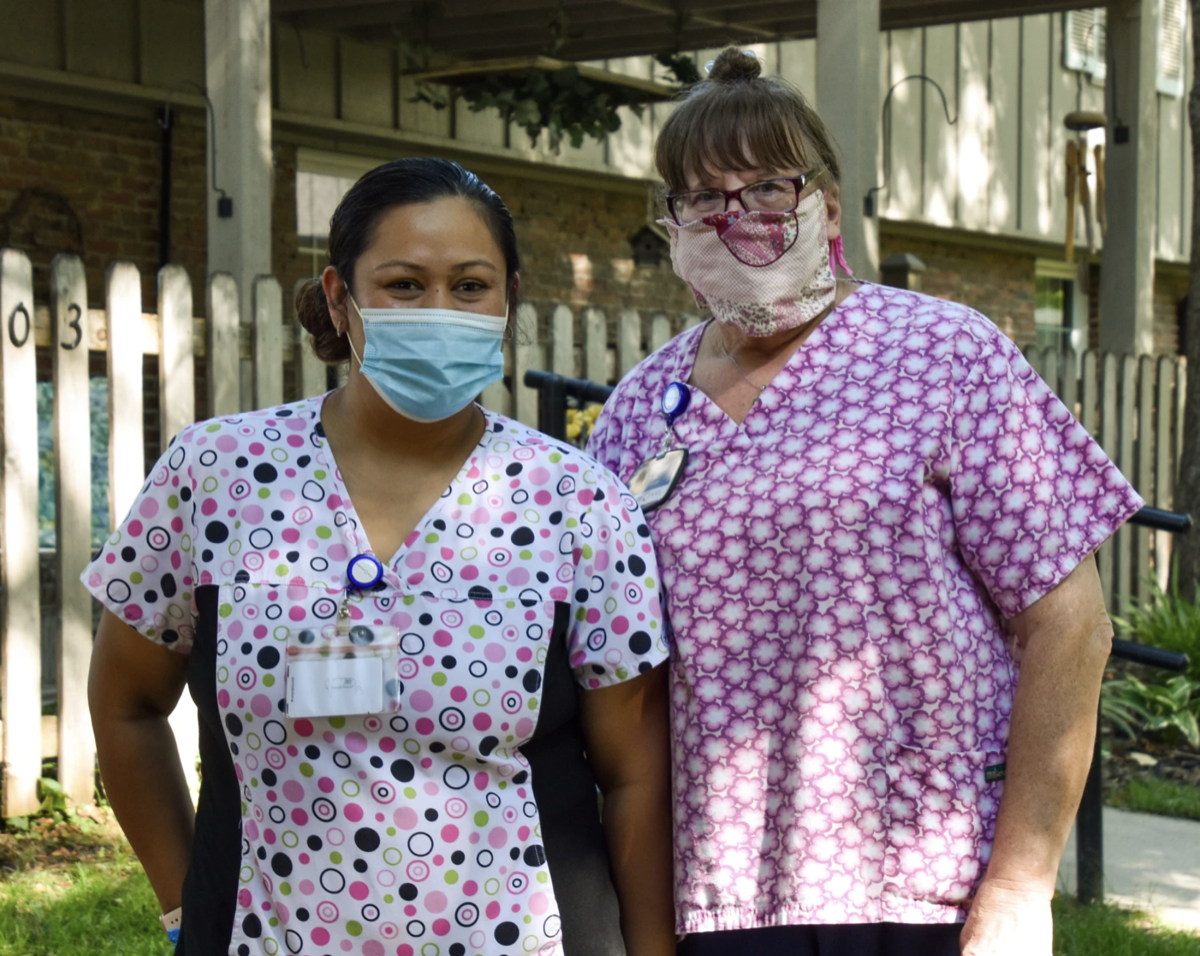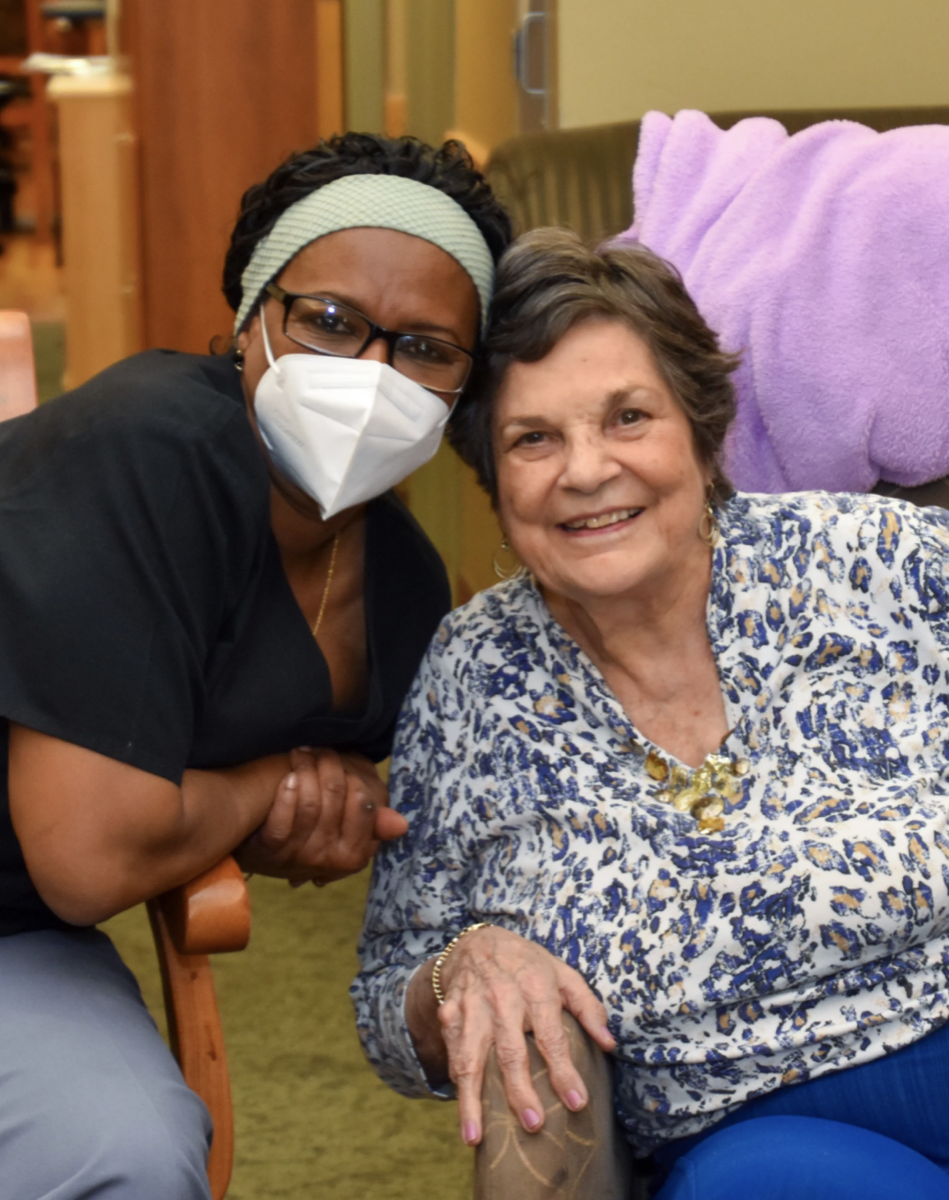Kansas Nursing Home Staff Struggle With COVID-19 Burn Out
Months into the pandemic, nursing home staff in Kansas get little relief due to limited testing and resources.

 This article is part of The State of Science, a series featuring science stories from public radio stations across the United States. This story by Celia Llopis-Jepsen originally appeared on Kansas News Service on August 26, 2020.
This article is part of The State of Science, a series featuring science stories from public radio stations across the United States. This story by Celia Llopis-Jepsen originally appeared on Kansas News Service on August 26, 2020.
When it takes several days for nurse’s aides to get a COVID-19 test and find out if they’re sick, coworkers have to work long hours, picking up extra shifts.
Half a year into the pandemic, Kansas nursing homes still face uneven access to fast COVID-19 testing through the state’s patchwork of private labs and hospitals. And the prices they pay for it vary widely.
Testing access has dramatically increased in Kansas from its initial slow start. Last month alone, it tested 4% of its population. But that hasn’t guaranteed quick and cheap options for long-term care.
Meanwhile, federal tallies show the virus has reached nursing home residents in about 30 counties, from the state’s most populous to some of its most rural. That’s caused more than half of the state’s coronavirus death toll.
Fifty outbreaks are active in long-term care facilities right now.
Though the state lab in Topeka frequently conducts mass testing of workers and residents from long-term care facilities when those places get hit with outbreaks, its help only stretches so far.
Kansas health secretary Lee Norman last week suggested the state contract with private labs willing to expand their capacity, and connect nursing homes to them.
“That would really speed up the turnaround time on the testing a lot,” he told a state task force.
Swift test results help nursing homes catch cases early, saving lives. They also let homes clear healthy employees faster so they can go back to work. That’s critical because nursing aides are taking on long hours—risking burnout and driving up overtime costs—to cover shifts for colleagues waiting to find out if a sore throat or a cough could be COVID-19.
“You can’t expect that they’re going to do that forever,” said Joe Ewert, CEO of Brewster Place in Topeka. “You just can’t.”
Brewster Place has nurse’s aides working 60 to 70-hour weeks to cover for the three to eight employees out with symptoms at any given time. Most turn out not to have the coronavirus, but checking can take anywhere from 48 hours to a week.

That variation is partly because wait times—for an appointment and then to get test results—differ by week, depending on demand, and by hospital or clinic, for similar reasons. One Brewster employee may go to one hospital for the test, and another may head to a different one.
Across the state, nursing homes’ experiences also depend on what resources their county health departments can offer.
“It’s a little bit odd that we have a million different ways to do it,” Ewert said. “It’s a little bit curious that folks in my profession aren’t basically (all) provided with the same access.”
An hour southeast of Topeka, nursing home employees with symptoms can count on almost immediate results from rapid-testing machines that Lyon County’s health agency acquired amid an outbreak at a meatpacking plant.
Months ago, Ewert ordered a rapid-testing machine, too.
“We are still waiting,” he said. If it ever comes through, “then we can start getting in line for the reagent. I anticipate every single step will be a long wait and a fight.”
The Trump administration has said it will start requiring weekly testing in many nursing homes, and promised to send out 14,000 machines. But nursing home administrators have many questions about how accurate and reliable the devices are, when they will arrive, and how accessible and affordable related testing supplies will be.
This spring, the administration promised to send protective gear to nursing homes, but when the boxes arrived, some facilities reported receiving subpar or unusable equipment.
Brewster Place in Topeka is dealing with its first cluster of cases among patients. Six employees and three residents tested positive for the virus that causes COVID-19.
When the coronavirus strikes a long-term care facility, it can require several weeks’ worth of repeatedly testing hundreds of people until all the cases are found and isolated, and the outbreak contained.
Nursing homes say the state lab in Topeka generally covers the first two rounds of facility-wide testing—and picks up the cost. The homes then turn to private labs for the subsequent rounds.
“The experience with the private labs has been mixed,” Mission Health Management Group vice president Shawn Sullivan said. His company has more than 30 long-term care facilities in Kansas. “We have had experiences where the turnaround time has been very quick and other times where the turnaround time has taken several days.”
The Kansas nursing home industry says prices also vary significantly—from less than $100 to more than $200 per test. Facilities with outbreaks can quickly rack up tens of thousands or dollars in expenses to stop a single outbreak.
While Medicare or other insurance covers lab work for residents, nursing homes and other long-term care facilities are generally on the hook for testing their employees.
The situation can be even tougher for locations farther from the state lab in Topeka.
Windsor Place in Coffeyville—southeast Kansas—faced an outbreak last month that affected 35 residents and 22 staff. Most did not experience symptoms, one was hospitalized and two died.
Windsor leaned largely on a lab in its region instead of sending samples to the state capital, nearly three hours away, because it offered same-day results.
“With the state lab, if we timed it right, the results were still two to four days out,” CEO Monte Coffman said.
Since the local lab charges less than $100 a test, Windsor has been able to afford the tests with help from federal stimulus funds. But Coffman is uncertain what will happen if outbreaks recur.
“If we have repeated periods of this into the fall or through the winter flu season,” he said, “then things tighten up.”
Flu season will likely lead to even more demand for testing patients with respiratory symptoms.
More than 1,700 cases of COVID-19 in Kansas—and 209 deaths—are linked to long-term care settings. That’s less than 5% of the known cases, but more than half of the fatalities.
And the situation may not get better anytime soon. Around 13% of Kansans who got checked for the virus in the past week tested positive, according to Johns Hopkins University. Experts say when rates are that high despite the state’s aggressive increase in testing, it suggests the virus is widespread.

It gained traction here and nationally as states reopened their economies and friends and family gathered again for holidays, sports and cookouts.
Renee Hively, health officer for Lyon County, thinks that likely contributed to two ongoing outbreaks at nursing homes there.
“I think people just tend to let their guards down,” she said. “Especially in the summer months, when people like to congregate and do all kinds of social activities.”
Her agency helped collect samples at the homes, and the state lab processed them generally within a day or two. The state covered the first two rounds of testing for the homes, and a third round for one of them that was struggling to get it done otherwise.
But Hively worries that nursing homes may find it even harder to get timely results as more people mix on a daily basis, spreading germs.
“With schools starting, and colleges,” she said, “the labs are going to get inundated with testing.”
Read Celia Llopis-Jepsen’s story and more reporting on Kansas News Service. Find out more about the state of nursing homes in our State of Science segment.
Invest in quality science journalism by making a donation to Science Friday.
Celia Llopis-Jepson is the host of “Up From Dust” from KCUR Studios in Kansas City, Missouri.